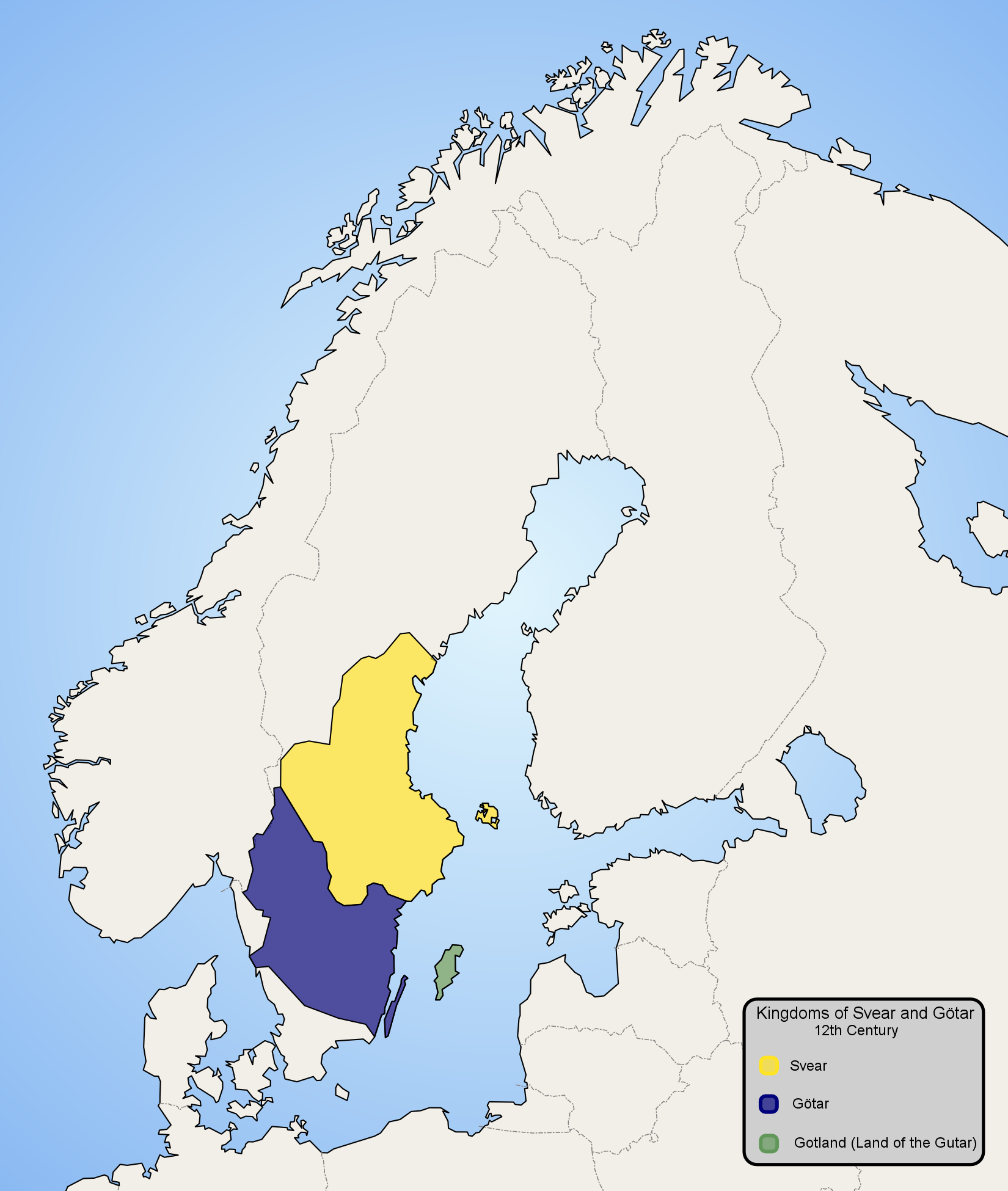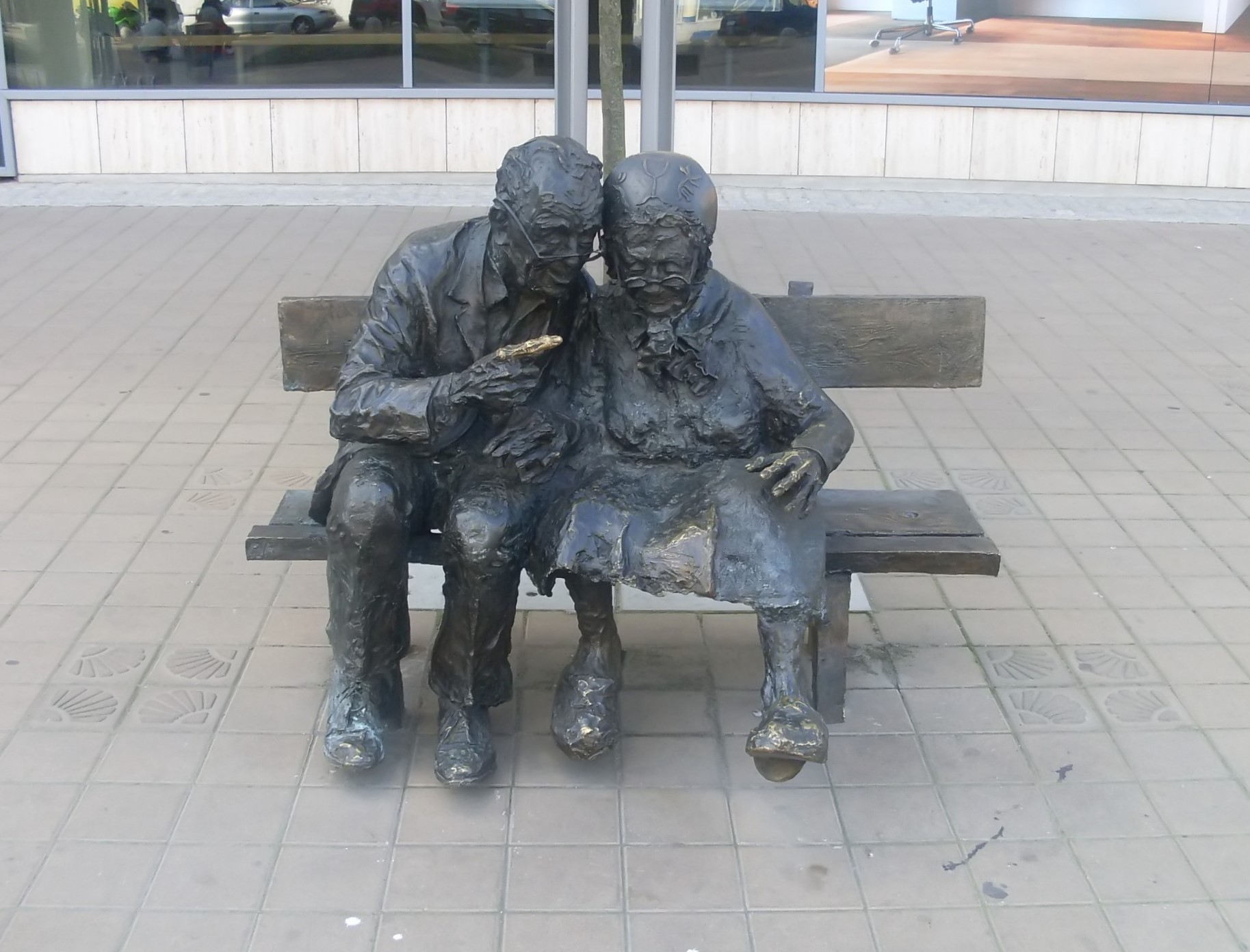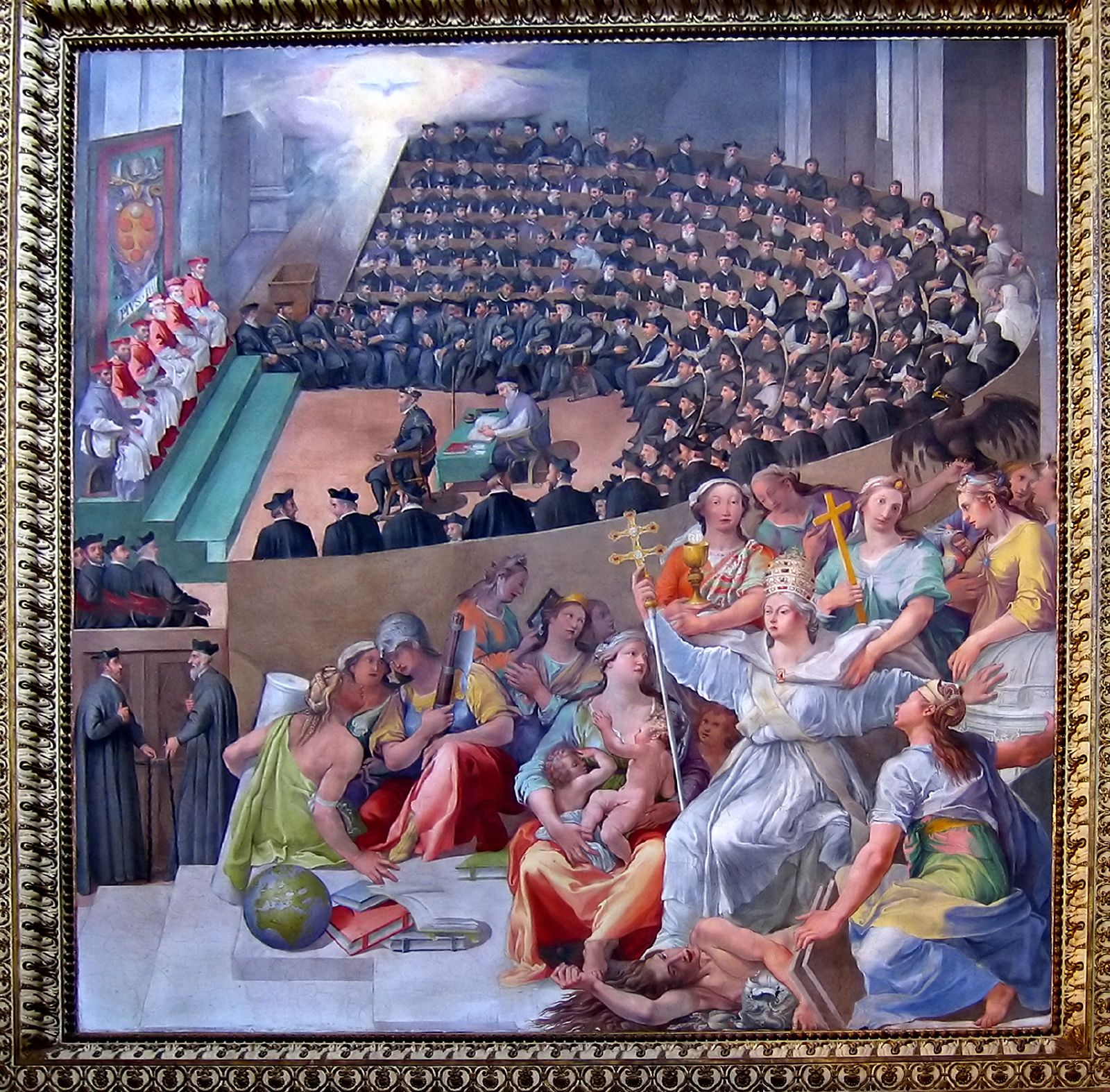|
More Danico
The phrase ''more danico'' is a Medieval Latin legal expression which may be translated as "according to Danish custom", i.e. under Medieval Scandinavian customary law. It designates a type of traditional marriage practiced in northern Europe during the Middle Ages. The institution The examples that have come down to us involve powerful rulers in a union with a highborn woman of somewhat lesser rank. Rarely, it occurred to legitimize an abduction, as with Rollo and Poppa, who was taken after a battle at Bayeux; but this is not a defining characteristic. While Roman law had not distinguished between elopement and bride kidnapping (both being ''raptus in parentes''), the distinction was significant in Germanic law. Still, according to Reynolds, the consent of the ''parentes'' was required in the ''more danico'' case. This consent could still be obtained after the fact, if an elopement was involved. The word "secular" here should not be interpreted to mean that no context of ... [...More Info...] [...Related Items...] OR: [Wikipedia] [Google] [Baidu] |
Medieval Latin
Medieval Latin was the form of Literary Latin Classical Latin is the form of Literary Latin recognized as a Literary language, literary standard language, standard by writers of the late Roman Republic and early Roman Empire. It was used from 75 BC to the 3rd century AD, when it developed ... used in Roman Catholic Western Europe during the Middle Ages. In this region it served as the primary written language, though local languages were also written to varying degrees. Latin functioned as the main medium of scholarly exchange, as the liturgical language of the Roman Catholic Church, Church, and as the working language of science, literature, law, and administration. Medieval Latin represented a continuation of Classical Latin and Late Latin, with enhancements for new concepts as well as for the increasing integration of Christianity. Despite some meaningful differences from Classical Latin, Medieval writers did not regard it as a fundamentally different language. There i ... [...More Info...] [...Related Items...] OR: [Wikipedia] [Google] [Baidu] |
Charles The Simple
Charles III (17 September 879 – 7 October 929), called the Simple or the Straightforward (from the Latin ''Carolus Simplex''), was the king of West Francia from 898 until 922 and the king of Lotharingia from 911 until 919–923. He was a member of the Carolingian dynasty. Early life Charles was the third and posthumous son of king Louis the Stammerer by his second wife Adelaide of Paris.Detlev Schwennicke, ''Europäische Stammtafeln: Stammtafeln zur Geschichte der Europäischen Staaten'', Neue Folge, Band II (Marburg, Germany: J. A. Stargardt, 1984), Tafel 1 As a child, Charles was prevented from succeeding to the throne at the time of the death in 884 of his half-brother, king Carloman II. Instead, Frankish nobles of the realm asked his cousin, Emperor Charles the Fat, to assume the crown. He was also prevented from succeeding the unpopular Charles the Fat, who was deposed in November 887 and died in January 888, although it is unknown if his overthrow was accepted o ... [...More Info...] [...Related Items...] OR: [Wikipedia] [Google] [Baidu] |
Dudo Of Saint-Quentin
Dudo, or Dudon, was a Picard historian, and dean of Saint-Quentin, where he was born about 965. Sent in 986 by Albert I, Count of Vermandois, on an errand to Richard I, Duke of Normandy, he succeeded in his mission, and, having made a very favorable impression at the Norman court, spent some years in that country. During a second stay in Normandy, Dudo wrote his history of the Normans, a task which Duke Richard had urged him to undertake. Very little else is known about his life, except that he died before 1043. ''Historia Normannorum'' Written between 996 and 1015, his ''Historia Normannorum''—also known as ''Libri III de moribus et actis primorum Normanniae ducum'' and ''Gesta Normannorum''—was dedicated to Adalberon, bishop of Laon. Dudo does not appear to have consulted any existing documents for his history, but to have obtained his information from oral tradition, much of it being supplied by Raoul, count of Ivry, a maternal half-brother of Duke Richard. Conse ... [...More Info...] [...Related Items...] OR: [Wikipedia] [Google] [Baidu] |
Adam Von Bremen
Adam of Bremen ( la, Adamus Bremensis; german: Adam von Bremen) (before 1050 – 12 October 1081/1085) was a German medieval chronicler. He lived and worked in the second half of the eleventh century. Adam is most famous for his chronicle ''Gesta Hammaburgensis ecclesiae pontificum'' (''Deeds of Bishops of the Hamburg Church''). He was "one of the foremost historians and early ethnographers of the medieval period". In his chronicle, he included a chapter mentioning the Norse outpost of Vinland, and was thus the first European to write about the New World. Life Little is known of his life other than hints from his own chronicles. He is believed to have come from Meissen, then its own margravate. The dates of his birth and death are uncertain, but he was probably born before 1050 and died on 12 October of an unknown year (possibly 1081, at the latest 1085). From his chronicles, it is apparent that he was familiar with a number of authors. The honorary name of ''Magister Adam'' show ... [...More Info...] [...Related Items...] OR: [Wikipedia] [Google] [Baidu] |
Swedish People
Swedes ( sv, svenskar) are a North Germanic peoples, North Germanic ethnic group native to the Nordic region, primarily their nation state of Sweden, who share a common ancestry, culture, history and language. They mostly inhabit Sweden and the other Nordic countries, Swedish-speaking population of Finland, in particular Finland where they are an officially recognized minority, with a substantial Swedish diaspora, diaspora in other countries, Swedish Americans, especially the United States. Etymology The English term "Swede" has been attested in English since the late 16th century and is of Middle Dutch or Middle Low German origin. In Swedish language, Swedish, the term is ''svensk'', which is from the name of ''svear'' (or Swedes), the people who inhabited Svealand in eastern central Sweden, and were listed as ''Suiones'' in Tacitus' history ''Germania (book), Germania'' from the first century AD. The term is believed to have been derived from the Proto-Indo-European language ... [...More Info...] [...Related Items...] OR: [Wikipedia] [Google] [Baidu] |
Viking Age
The Viking Age () was the period during the Middle Ages when Norsemen known as Vikings undertook large-scale raiding, colonizing, conquest, and trading throughout Europe and reached North America. It followed the Migration Period The Migration Period was a period in European history marked by large-scale migrations that saw the fall of the Western Roman Empire and subsequent settlement of its former territories by various tribes, and the establishment of the post-Roman ... and the Germanic Iron Age. The Viking Age applies not only to their homeland of Scandinavia but also to any place significantly settled by North Germanic peoples, Scandinavians during the period. The Scandinavians of the Viking Age are often referred to as ''Vikings'' as well as ''Norsemen'', although few of them were Vikings in sense of being engaged in piracy. Voyaging by sea from their homelands in Denmark, Norway, and Sweden, the Norse people settled in the Viking activity in the British Is ... [...More Info...] [...Related Items...] OR: [Wikipedia] [Google] [Baidu] |
Monogamy
Monogamy ( ) is a form of dyadic relationship in which an individual has only one partner during their lifetime. Alternately, only one partner at any one time ( serial monogamy) — as compared to the various forms of non-monogamy (e.g., polygamy or polyamory). The term is also applied to the social behavior of some animals, referring to the state of having only one mate at any one time. A monogamous relationship can be sexual or emotional, but it's usually both. Many modern relationships are monogamous. Terminology The word '' monogamy'' derives from the Greek μονός, ''monos'' ("alone"), and γάμος, ''gamos'' ("marriage").Cf. "Monogamy" in ''Britannica World Language Dictionary'', R.C. Preble (ed.), Oxford-London 1962, p. 1275:''1. The practice or principle of marrying only once. opp. to digamy now ''rare'' 2. The condition, rule or custom of being married to only one person at a time (opp. to polygamy or bigamy) 1708. 3. Zool. The habit of living in pairs, or ... [...More Info...] [...Related Items...] OR: [Wikipedia] [Google] [Baidu] |
De Origine Et Situ Germanorum
The ''Germania'', written by the Roman historian Publius Cornelius Tacitus around 98 AD and originally entitled ''On the Origin and Situation of the Germans'' ( la, De origine et situ Germanorum), is a historical and ethnographic work on the Germanic peoples outside the Roman Empire. Contents The ''Germania'' begins with a description of the lands, laws, and customs of the Germanic people (chapters 1–27); it then describes individual peoples, beginning with those dwelling closest to Roman lands and ending on the uttermost shores of the Baltic, among the amber-gathering Aesti, the Fenni, and the unknown peoples beyond them. Tacitus says (chapter 2) that physically, the Germanic peoples appear to be a distinct nation, not an admixture of their neighbors, since nobody would desire to migrate to a climate as horrid as that of Germania. They are divided into three large branches, the Ingaevones, the Irminones, and the Istaevones, deriving their ancestry from three sons of Mannu ... [...More Info...] [...Related Items...] OR: [Wikipedia] [Google] [Baidu] |
Tacitus
Publius Cornelius Tacitus, known simply as Tacitus ( , ; – ), was a Roman historian and politician. Tacitus is widely regarded as one of the greatest Roman historians by modern scholars. The surviving portions of his two major works—the ''Annals'' (Latin: ''Annales'') and the ''Histories'' (Latin: ''Historiae'')—examine the reigns of the emperors Tiberius, Claudius, Nero, and those who reigned in the Year of the Four Emperors (69 AD). These two works span the history of the Roman Empire from the death of Augustus (14 AD) to the death of Domitian (96 AD), although there are substantial lacunae in the surviving texts. Tacitus's other writings discuss oratory (in dialogue format, see '' Dialogus de oratoribus''), Germania (in ''De origine et situ Germanorum''), and the life of his father-in-law, Agricola (the general responsible for much of the Roman conquest of Britain), mainly focusing on his campaign in Britannia ('' De vita et moribus Iulii ... [...More Info...] [...Related Items...] OR: [Wikipedia] [Google] [Baidu] |
Ethnography
Ethnography (from Greek ''ethnos'' "folk, people, nation" and ''grapho'' "I write") is a branch of anthropology and the systematic study of individual cultures. Ethnography explores cultural phenomena from the point of view of the subject of the study. Ethnography is also a type of social research that involves examining the behavior of the participants in a given social situation and understanding the group members' own interpretation of such behavior. Ethnography in simple terms is a type of qualitative research where a person puts themselves in a specific community or organization in attempt to learn about their cultures from a first person point-of-view. As a form of inquiry, ethnography relies heavily on participant observation—on the researcher participating in the setting or with the people being studied, at least in some marginal role, and seeking to document, in detail, patterns of social interaction and the perspectives of participants, and to understand these ... [...More Info...] [...Related Items...] OR: [Wikipedia] [Google] [Baidu] |
Rome
, established_title = Founded , established_date = 753 BC , founder = King Romulus ( legendary) , image_map = Map of comune of Rome (metropolitan city of Capital Rome, region Lazio, Italy).svg , map_caption = The territory of the ''comune'' (''Roma Capitale'', in red) inside the Metropolitan City of Rome (''Città Metropolitana di Roma'', in yellow). The white spot in the centre is Vatican City. , pushpin_map = Italy#Europe , pushpin_map_caption = Location within Italy##Location within Europe , pushpin_relief = yes , coordinates = , coor_pinpoint = , subdivision_type = Country , subdivision_name = Italy , subdivision_type2 = Regions of Italy, Region , subdivision_name2 = Lazio , subdivision_type3 = Metropolitan cities of Italy, Metropolitan city , subdivision_name3 = Metropolitan City of Rome Capital, Rome Capital , government_footnotes= , government_type = Mayor–council gover ... [...More Info...] [...Related Items...] OR: [Wikipedia] [Google] [Baidu] |
Council Of Trent
The Council of Trent ( la, Concilium Tridentinum), held between 1545 and 1563 in Trent (or Trento), now in northern Italy, was the 19th ecumenical council of the Catholic Church. Prompted by the Protestant Reformation, it has been described as the embodiment of the Counter-Reformation."Trent, Council of" in Cross, F. L. (ed.) ''The Oxford Dictionary of the Christian Church'', Oxford University Press, 2005 (). The Council issued condemnations of what it defined to be heresies committed by proponents of Protestantism, and also issued key statements and clarifications of the Church's doctrine and teachings, including scripture, the biblical canon, sacred tradition, original sin, justification, salvation, the sacraments, the Mass, and the veneration of saints.Wetterau, Bruce. ''World History''. New York: Henry Holt and Company, 1994. The Council met for twenty-five sessions between 13 December 1545 and 4 December 1563. Pope Paul III, who convoked the Council, oversaw the ... [...More Info...] [...Related Items...] OR: [Wikipedia] [Google] [Baidu] |







